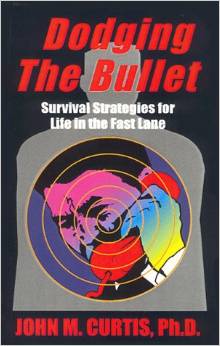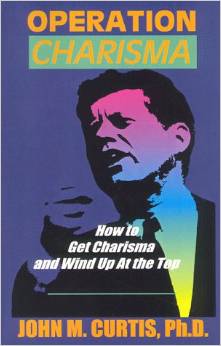Since the official end of the Soviet Union Dec. 26, 1991, a tectonic shift in former Soviet satellites left many countries scrambling for new boundaries much like the end of WW I Nov. 11, 1918, when the Austro-Hungarian and Ottoman Empires were divided up creating new sovereign states in the Europe, Mideast and North Africa. Armenia earned its independent statehood from the Soviet Union Sept. 21, 1991, much later than Azerbaijan that received its independence from the Russian Czar May 28, 1918, including the now disputed mountainous Nagorno-Karabakh region, now inhabited largely by Armenians. No one questions that the disputed territory, claimed as ancient homeland to Armenia, but clearly within the U.N.-approved borders of Azerbaijan. Meeting at the State Department with 56-year-old Secretary of State Mike Pompeo, the U.S. tried to broker a ceasefire between Armenia and Azerbaijan.
Azerbaijan is an oil-rich Muslim country on the Caspian Sea with a vibrant oil industry with a bountiful coastline and tourism industry. Armenia, in contrast, is a poor landlocked country Armenian Eastern Orthodox country with a large diaspora all over the world. When you look at the two countries side-by-side, it’s a tale of two cities, one rich the other poor, one with the bright future in Azerbaijan and Armenia struggling to find any possible way to improve its $12.813 billion Gross Domestic Product [GDP], ranked 130, Below Niger and above North Macedonia. Azerbaijan has a GPD of $41.666 billion, ranked 88, above Tunisia and below Jordan. Ranked almost four times the GDP of Armenia, Azerbaijan doesn’t need the Nagorno-Karabakh region for its material wealth. Yet the two countries with Turkey’s involvement now find themselves at war in the Nagorno-Karabakh region.
Turkey has aided Aszerbaijan supplying arms and troops to shell Stepanakert, rhe regional capital of Nagorno-Karabakh. Azeri forces shelled Stepanakert with Smerch long-range rockets, a powerful Soviet-era rocket system using cluster-munitions capable of widespread devastation. It couldn’t be more ironic that Azerbaijan hits Armenian-occupied territory of Russian-made weapons when Russia has a mutual defense pact with Armenia. Turkey, a member of NATO, finds itself in the middle of conflict potentially with the Russian Federation, not yet coming to Armenia’s defense. Working on a ceasefire agreement, Pompeo wants to deescalate the situation to find a path to some kind of autonomy agreement between the two warring countries. Azerbaijan fought a bloody war with Armenia, ending in 1994 with current border arrangements, essentially ceding Nagorno-Karabakh to Armenia.
Russia tried but failed to broker a ceasefire agreement with Azerbaijan and Armenia, prompting the U.S. to get into the conflict. “Both must implement a ceasefire and return to substantive negotiations,” Pompeo said, while shells kept exploding in Stepanakert. Armenians living the Nagorno-Karabakh regions are 100% attached to the land as their ancestral home. “This is my motherland, I’m not going to leave it,” said Georgiy, a resident of Stepankert. “All people will stand until the last,” attesting to resident’s attachment. In the neighboring town of Shushi the Holy Savior Cathedral AKA the Ghazanchetsots Cathedral, stands as a religious monument to Armenians’ Eastern Orthodox Church. Holy Savior Cathedral serves as a hub for Armenian weddings, funeral and other community events, something showing strong ties to the Nagorno-Karabakh region.
Azerbaijan President Ilham Aliyev said the he’s ready to sit down with Armenian Prime Minister Nikol Pashinyah to negotiate a peace deal. “We are ready to stop even today,” Aliyev said. “But unfortunately, Armenia grossly violated the ceasefire . . .if they don’t stop, we will go to the end with the aim of liberating the occupied territories,” warning Aermenia that they risked losing Nagorno-Karabakh region. Aliyev has a willing partner in Turkey who has an old ax to grind with Armenians whom they blame for the collapse of the Ottoman Empire. Armenians blame Turkey for an historic genocide killing 1.5 million Armenians in the death marches around 1916, before WW I. Pompeo finds himself squeezed between an age-old conflict, at the same time, not wanting to see Turkey get more involved prompting Russian President Vladimir Putin to honor his defense treaty with Armenia.
Azerbaijan already fought a bloody Nagorno-Karabakh war in 1994 losing 11,557 soldiers, getting nothing from the past conflict other than more death and destruction. Amenia, backed by Russian arms and various mercenaries, battled Azerbaijian to loggerheads, prompting a cease fire agreement without ceding land Armenia. Turkish President 66-year-old Recep Tayyip Erdogan said that he hoped Ankara and Moscow could broker a lasting peace deal. Pompeo said that Turkey was making a bad situation worse, supplying arms and mercenaries to shell the Nagorno-Karabakh region. Azeerbaijan President Aliyev knows that Armenia has no intention of leaving the area, deeply entrenched it what settlers think are ancestral Armenian lands. While Armenian President Pashinyan sees no prospects for peace, Putin could put pressure on Armenia to enter into a lasting ceasefire or peace agreement.



